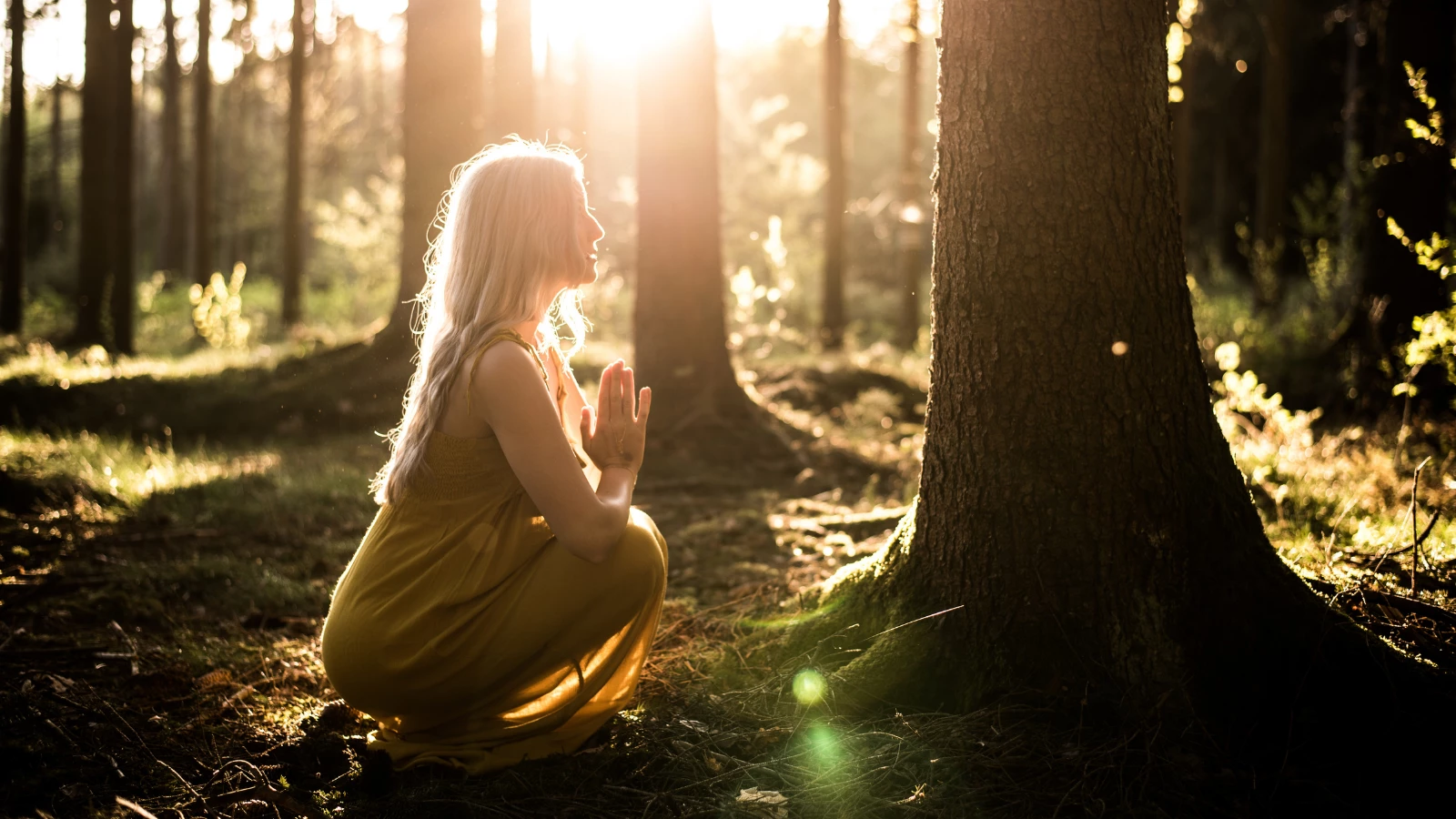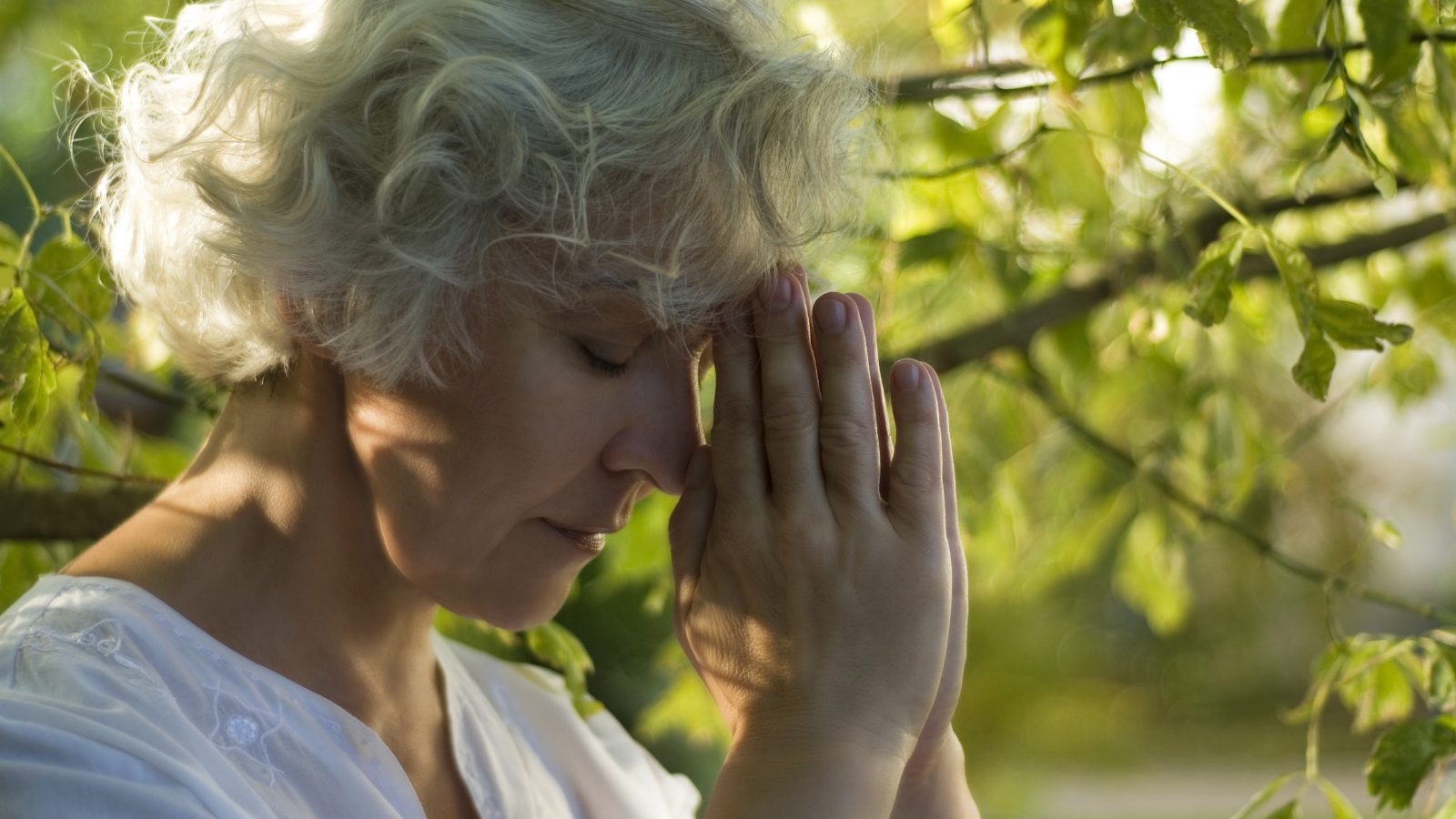Yoga’s Chakras: Guides for Staying on the Path

This is the final post in my series on yoga’s chakras. Traditionally, the chakra system is a meditation practice for nyāsa, which means “to place” or take the mind to specific points in the body and then place a mantra, deity, or symbol at each energetic point. The science of Tantra (about 2,000 years ago) opened the door to viewing the chakras as a model of the human being and using the tools of hatha yoga to explore them. Our opportunity and responsibility as 21st-century yogis is to honor these ancient sources while adapting their wisdom to our time, cultures, and lifestyles.
Over the series, I’ve shared what I’ve learned about the seven-chakra model as a useful lens through which to view ourselves and how we move through our lives. In the introduction, Guides on the Path, I offered an overview of yoga’s chakras as guides on the path through life. In this last post, I offer a review of key points along with affirmations that you can use to help stay on the path to Self-realization.
How to Enhance Yoga’s Chakras with Affirmations

Affirmations are short positive statements made in the present tense. Affirmation practice starts with a basic understanding of the essential truth of many spiritual paths—that we are already whole, just as we are. Affirmations remind us of that truth so we don’t have to apply ego, willpower, or striving. Feel free to choose and use the ones suggested or make up your own. Affirmations can be combined with your daily yoga/meditation practice or repeated at any time during your daily activities.
Muladhara (Root) Chakra is described under Stand Your Ground. The energy of this chakra is related to the qualities of safety, security, survival, and connection to the earth element. Feeling disconnected, stressed, and fearful can be an indication of the need to restore a sense of balance to this chakra.
Affirmation: I am fully present in my body.
Swadhisthana (Sacral) Chakra is described under Go with the Flow. Life, like water, can flow gently like a babbling brook or smash into us like a tidal wave. To ‘go with the flow,’ and embrace change without losing stability, we need to develop healthy boundaries and resilience as we continue on the path to self-awareness and Self-realization.
Affirmation: With awareness and balance I go with the flow of life.
Manipura (Solar Plexus) Chakra is described under Power Up. The fiery energy of this chakra governs personality, ego, and identity, as well as personal freedom, choice, and self-actualization. When balanced, we gain the clarity needed to move through our lives with personal power, authenticity, and self-definition.
Affirmation: I am a unique strand in life’s unfolding plan.
Anahata (Heart) Chakra is described under Nurturing Your Heart Chakra. The main issues to address in working with this chakra are love and relationships with ourselves and with others. This work asks us to develop an inner emotional steadiness and calm from which to act consciously with loving-kindness, forgiveness, and compassion. This is not an easy task but one we need to tackle.
Affirmation: With clarity and compassion, I give and receive love as a gift and a blessing.

Vishuddha (Throat) Chakra is described under Show Up and Be Heard. One of the life lessons associated with the energy of this chakra is finding one’s voice and expressing it responsibly. This begins with listening to find our truth as it speaks to us within silence and meditation. Then we learn to communicate it to the world with integrity.
Affirmation: I speak and act with integrity and release attachment to the outcomes.
Ajna (Third Eye) Chakra is described under Journey to Wisdom. With positive intention, we invite self-reflection and insight, which lead to deep self-knowledge and wisdom. Here we take the lessons learned from the lower five chakras and move our consciousness forward to recognize our inherent wholeness.
Affirmation: Opening to inner wisdom, I receive the guidance I need.
Sahasrara (Crown) Chakra is described under Seek Your Source. Two life lessons connected to this chakra are our willingness and ability to: 1. recognize and realize our spiritual nature, and 2. transcend the power that our illusions have over our lives and experience. In the search for spiritual connection, we may encounter within ourselves a tendency to deny the body, repress our difficult issues, and ignore our shadow aspects.
How do we work with the Crown Chakra safely while addressing what we may deny or wish to ignore? I suggest starting with asana to first ground us in the body. Mountain Pose (Tadasana) is foundational. Like a mountain, our base will be grounded and connected to the earth while we reach for a higher awareness.
Affirmation: I am the whole to which nothing can be added or subtracted.
The Chakras Can Bring Balance to All Areas of Our Lives
When we recognize an imbalance on any level or in any area of our lives, we can use yoga’s chakras as guides to help us understand the what, when, where, how, and why of our issues, beliefs, habits and behavior before taking action to address them. In working with yoga’s chakras keep in mind these words from Joseph Le Page:
“The great wisdom of the chakras and their seven levels is that each level must be explored, accepted, realized, and integrated. No aspect of our lives, including our deepest core issues, our most painful emotional traumas, or our darkest shadow aspects, can be overlooked or bypassed.”
Also, read...
4 Ways to Protect Hands and Wrists in Yoga
Dancer Pose (Natarajasana): Practice Tips And A Beginner Yoga Sequence
Warrior 2: How To Sequence For Healthy Hip Alignment In A Beginner’s Class
Related courses
Keys to Finding Inner Strength: A Yogic Wisdom Path to Developing Greater Resilience
Somatic Yoga for Fascial Unwinding

Beth Gibbs, MA, is a faculty member at the Kripalu School of Integrative Yoga Therapy. She holds a master’s degree in Yoga Therapy and Mind/Body Health from Lesley University in Cambridge, MA. She is the author of Soul Food, Life-Affirming Stories Served with Side Dishes and Just Desserts, Enlighten Up! Finding Clarity, Contentment, and Resilience in a Complicated World and Ogi Bogi, The Elephant Yogi, a therapeutic yoga book for children. Beth is an experienced workshop leader and public speaker. She blogs at bethgibbs.com
- Eastern Body; Western Mind by Anodea Judith (Psychology and the chakras)
- Chakra Yoga by Anodea Judith (Good resource for the application of asana, pranayama, mantras, imagery, and meditation to the chakras)
- Anatomy of the Spirit by Carolyn Myss (Easy reading!)


